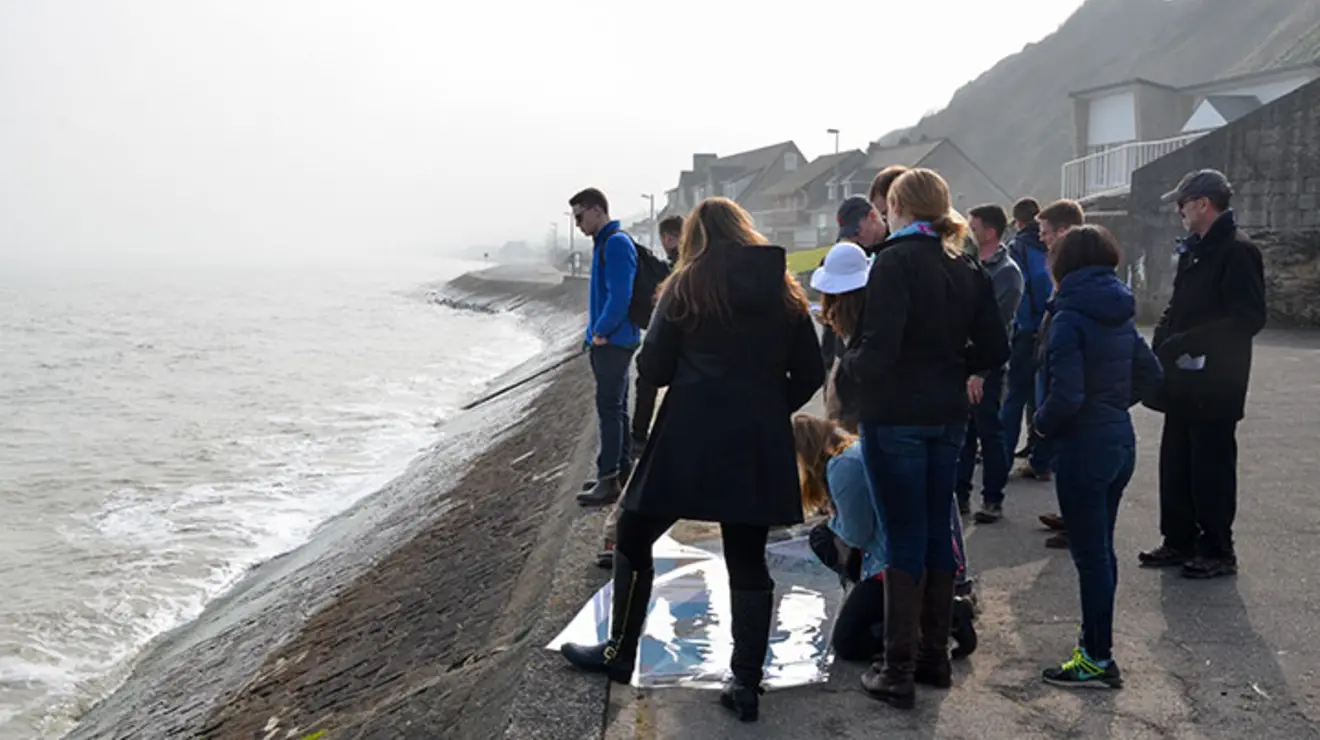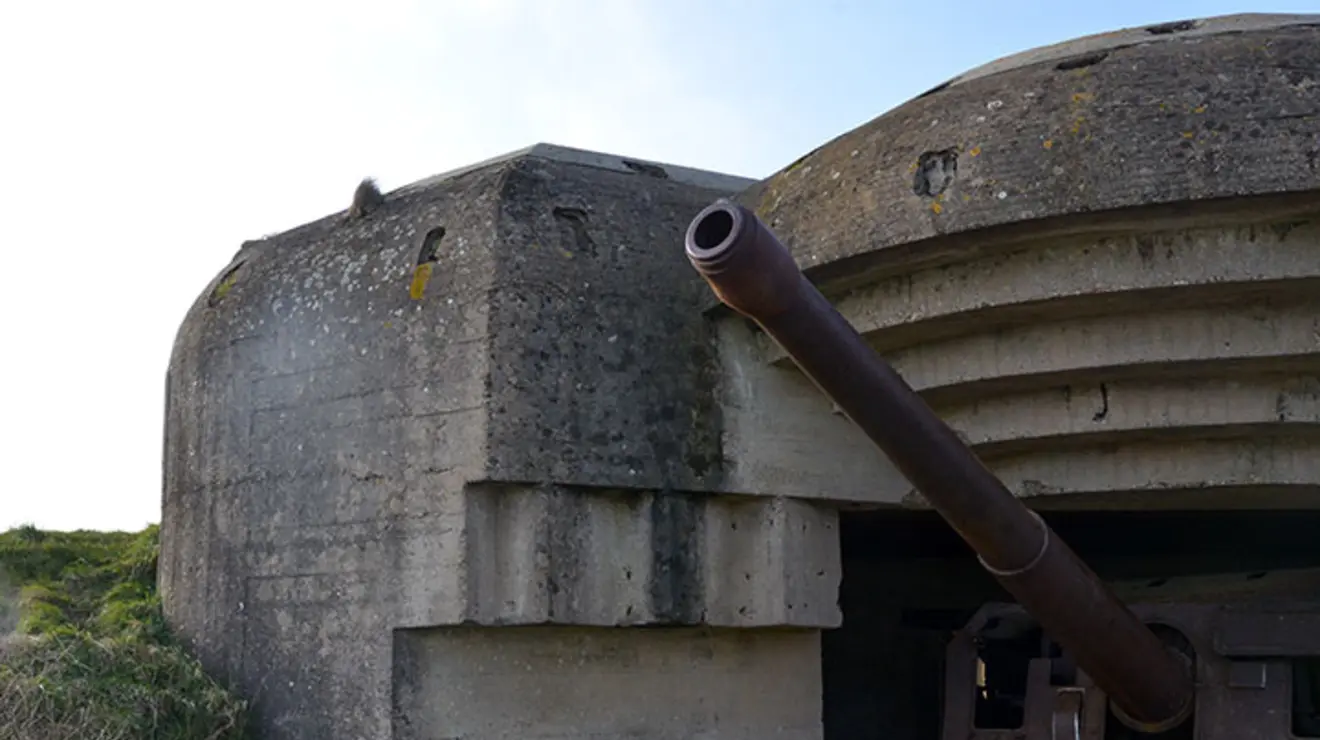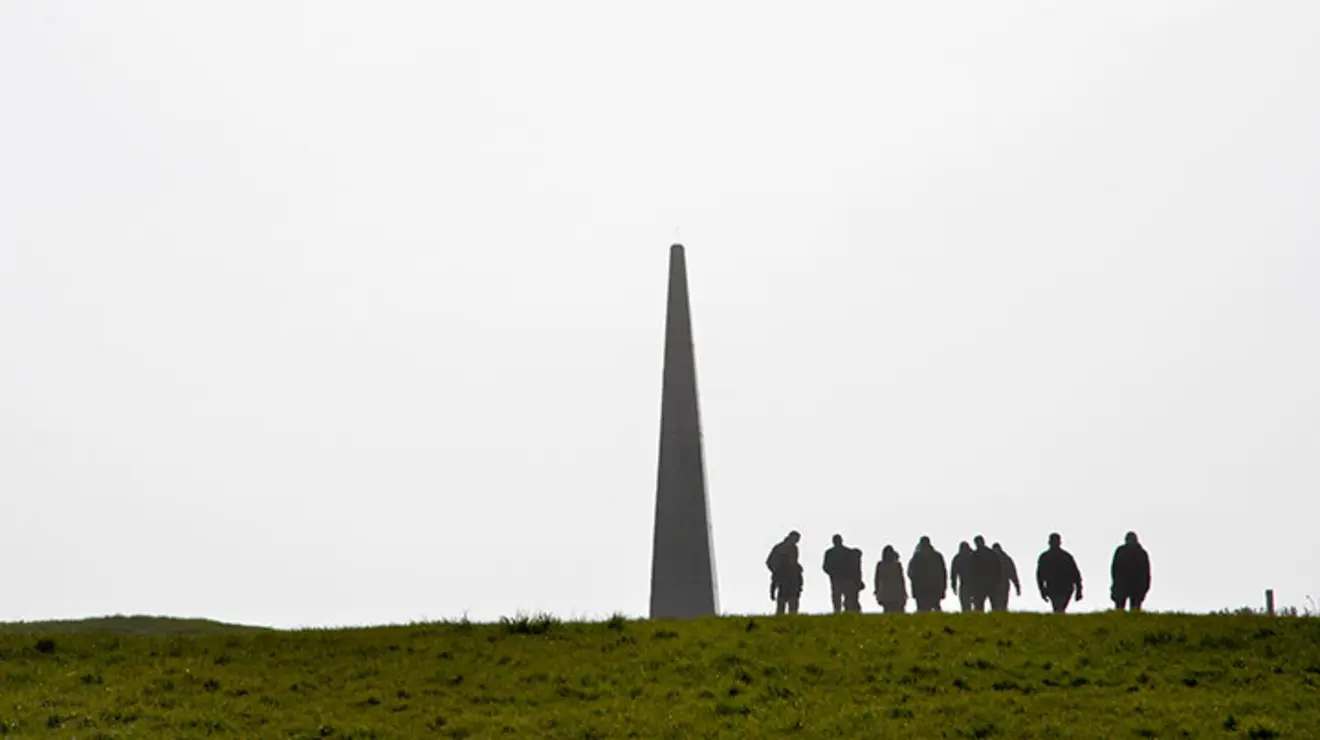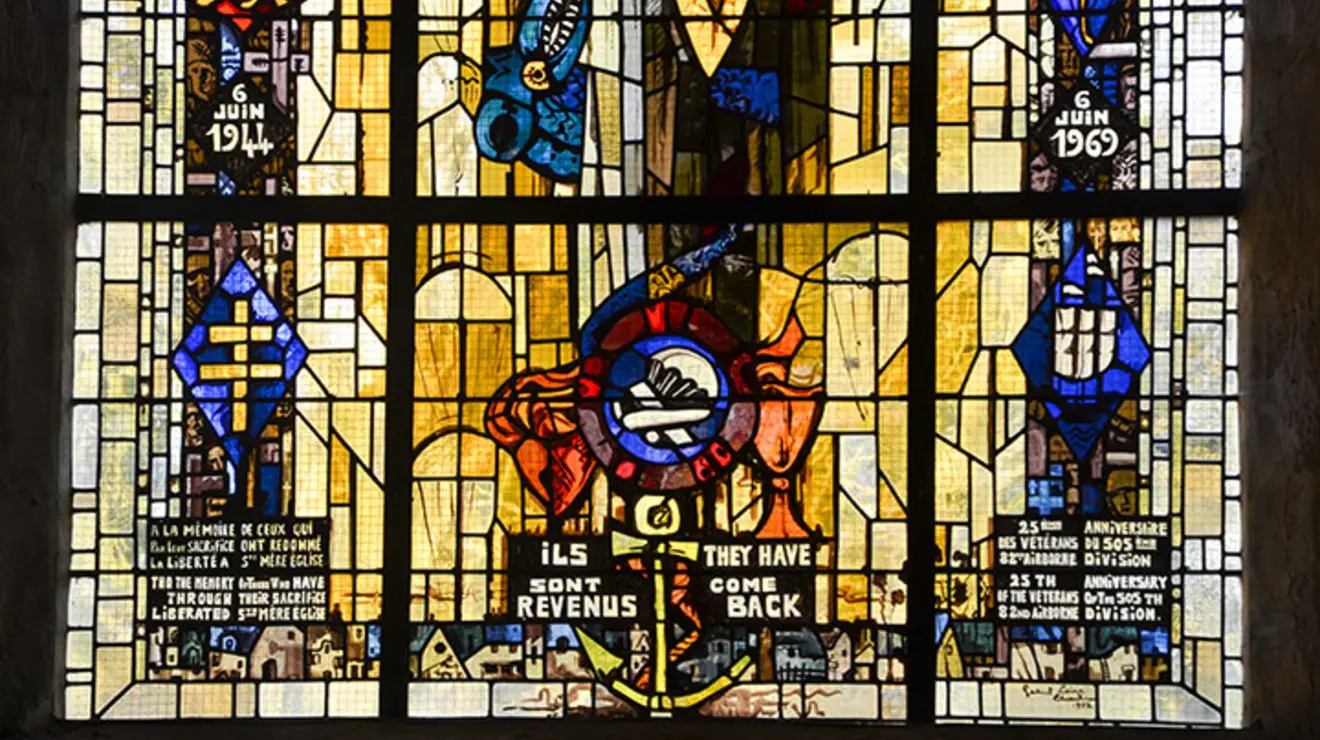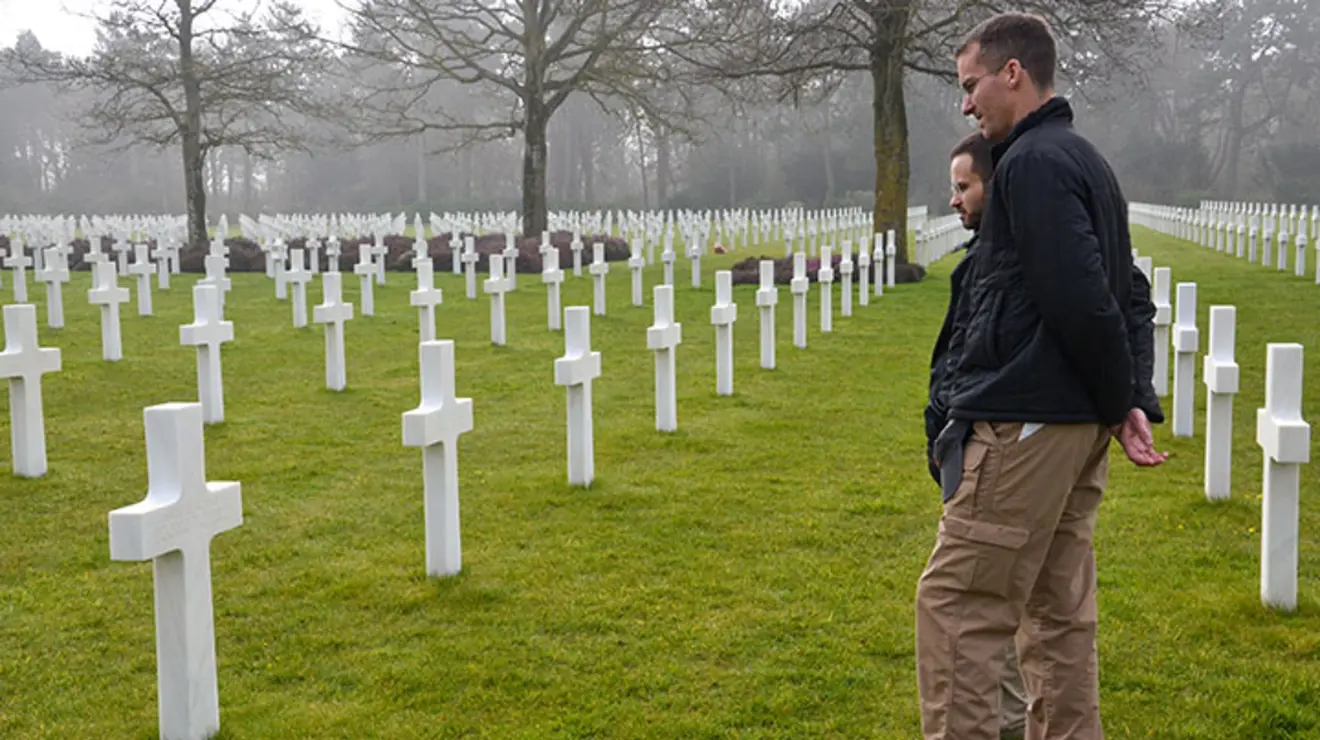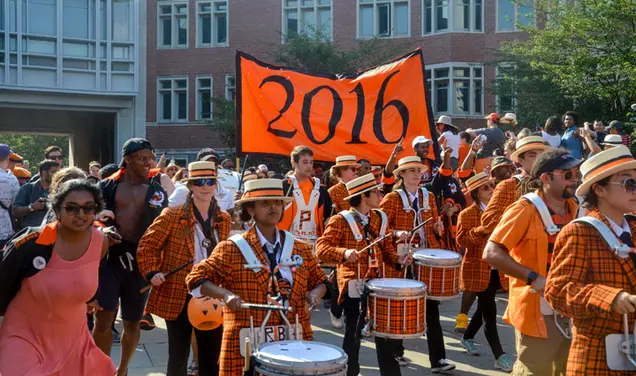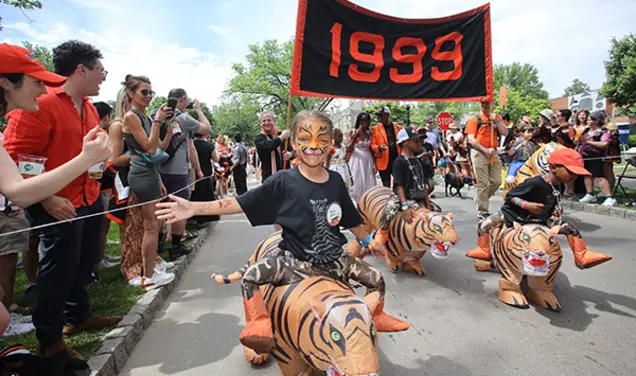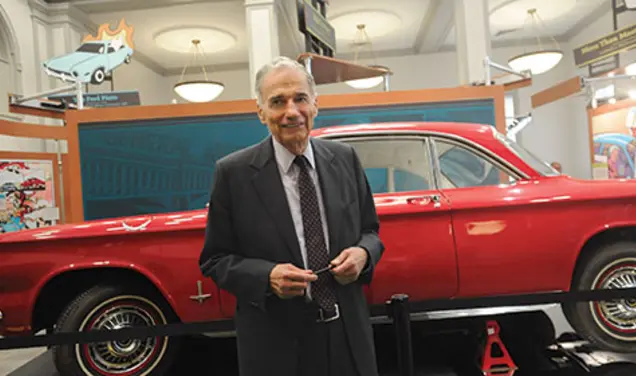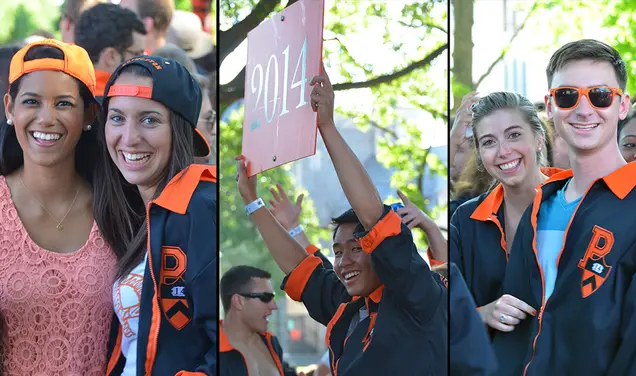History, Up Close: Students Visit Normandy
In a spring break trip to Normandy led by Professor Aaron Friedberg, students learned in person about the strategies that took place on the historic World War II battleground.
Sponsored by the Woodrow Wilson School’s Center for International Strategic Studies, which is directed by Friedberg and Professor G. John Ikenberry, the trip was part of the center’s Strategic Education Initiative. Organizing activities for students interested in learning about strategy outside the classroom, the initiative has previously led trips to historic battlefields such as Gettysburg. On the Normandy trip, Friedberg was joined by Professor Edward Erickson, a World War II historian from the Marine Corps Command and Staff College.
Participants were undergraduate and graduate students in the Woodrow Wilson School who had previously participated in events organized by the Strategic Education Initiative. Many of the students had also taken Friedberg’s “Grand Strategy” class, which examines a range of historic strategists, from Sun Tzu to Henry Kissinger.
Before arriving at Normandy, students were assigned to prepare presentations about the locations they would visit. Friedberg noted the students were able to take advantage of Normandy’s largely preserved landscapes to give detailed lessons about what took place during the Allied invasion in 1944.
“It’s one of the most impressive and moving locations,” Friedberg said. “The land still has craters from bombs and artillery shells. There are still gun emplacements, and you can stand at the edge of the cliff and see the two hundred foot drop that the American troops had to climb.”
Realizing the conflict’s immense scale, Friedberg’s students were able to connect the French battlefield to fellow Princetonians. “Some students looked up Princeton graduates who had died at Normandy, and we visited some of their gravesites at the Normandy American Cemetery,” Friedberg said. “You stand in the field and there are crosses as far as you can see. It’s powerful.”
Friedberg hoped the trip would leave his students with not only a better understanding of World War II, but also the complexity and uncertainty of warfare.
“It’s one thing for students to read about war and strategy in books, but to see the actual places where the events took place makes them realize something else entirely,” Friedberg said. “I always try to remind them that the people who fought and died there were often younger than they are.”


